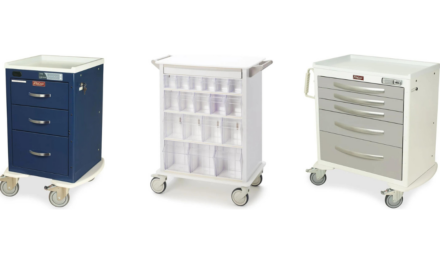As you construct the ideal sleep system for your residents, you will discover many options for sleep surfaces, each with their own benefits and limitations. Air overlays were once a common solution in the profession due to their low cost when compared to a traditional air mattress. However, with recent advancements in foam mattress technology, it is worth reconsidering their place in your community. While initial price is certainly a key factor in any investment, it is important to consider the health and comfort of your residents above all else.
The following considerations highlight the unexpected ways an air overlay differs from other mattresses in a clinical setting. These important comparisons should help answer the question – “Which is best for my resident?”
Pressure Redistribution
Any sleep surface used in Senior Living must address pressure ulcer prevention. Whether your resident spends the majority of their day in bed or if they only use it for sleep, aging bodies are incredibly susceptible to this painful, preventable condition. A quality sleep surface allows gentle immersion to redistribute pressure without bottoming out.
Most air overlays measure only 3″ thick – not nearly large enough to prevent a typical resident bottoming out. When this happens, all benefits of immersion are lost as the body’s peak points of pressure will rest on the surface underneath, providing the ideal condition for pressure ulcers. Learn more about pressure mapping in our latest “Ask the Experts” blog post!
Foam mattresses on the other hand are thick enough to prevent bottoming out and can also feature segmented foam sections of different densities, allowing for even more comfort and immersion in the most susceptible areas.

Microclimate Management
Air overlays are generally constructed of vinyl, a fabric that offers little to no breathability. This can cause a resident to become overheated and sweat. Whenever excess moisture is present on the skin, a resident is more susceptible to skin breakdown, which is exactly what you are trying to avoid by putting them on an air surface in the first place.
For proper microclimate management you are often better off using either a foam mattress or an air mattress with some level of low air loss, depending on the clinical condition of the resident. Foam mattresses offer more breathability through their open-cell foam and breathable covers. Dynamic air mattresses also utilize breathable stretch covers, but have the added benefit of low air loss technology which allows air to blow out of the bladders to keep the surface cool and dry.
While a foam mattress and air overlay combination was once more common, advancements in the mattress market have made air overlays an outdated technology. Though admittedly more affordable, an air overlay provides far less protection against pressure ulcers and skin breakdown when compared to other contemporary solutions.
If you are currently using air overlays in your community, consider Direct Supply’s broad selection of air mattresses to meet all your needs. Consult our mattress selection guide to learn which mattresses may be a better fit for your residents.
If you have additional questions and would like to speak to a Direct Supply consultant contact us to learn more!




